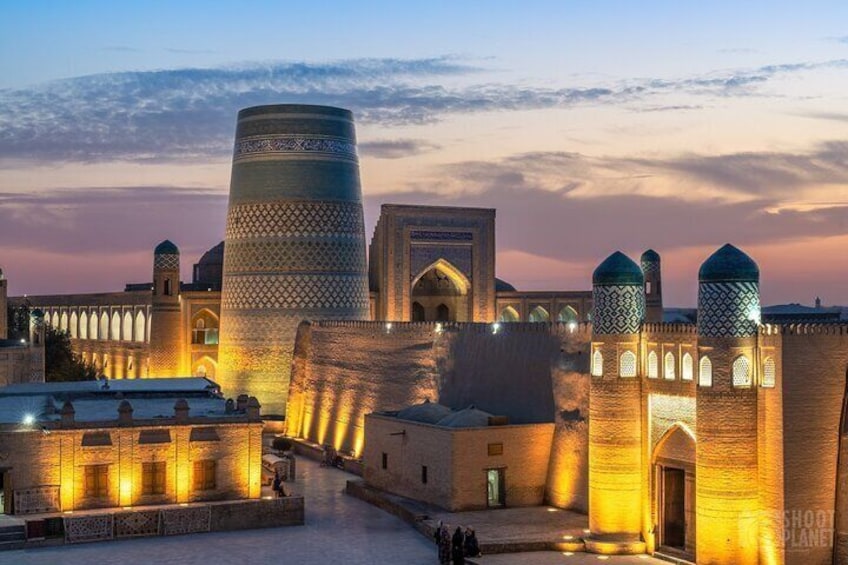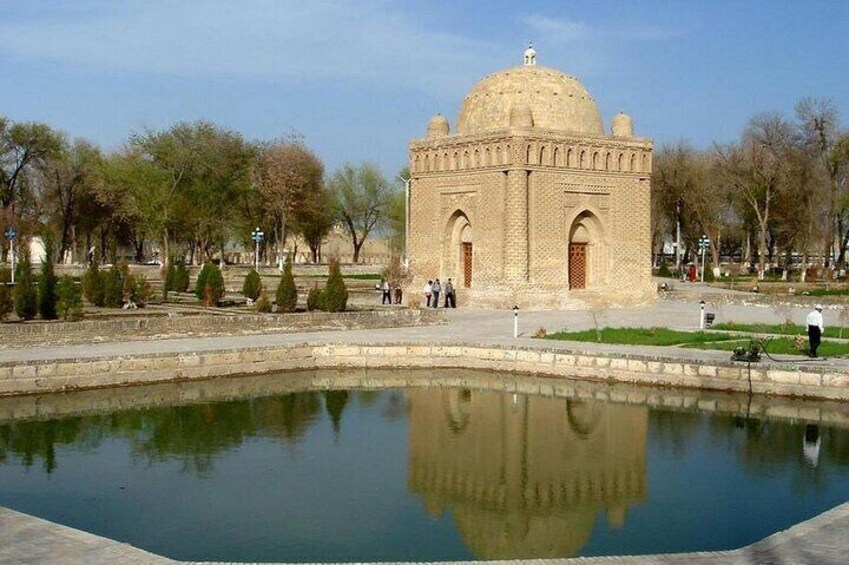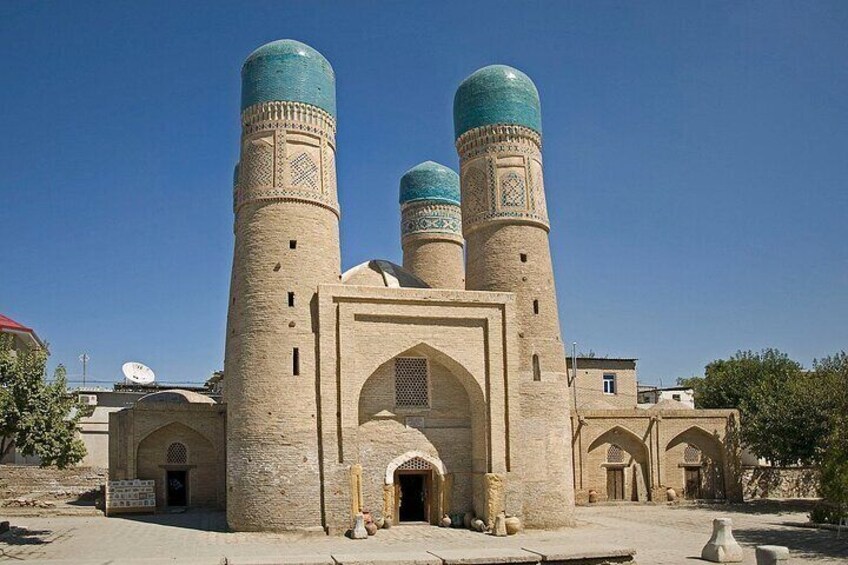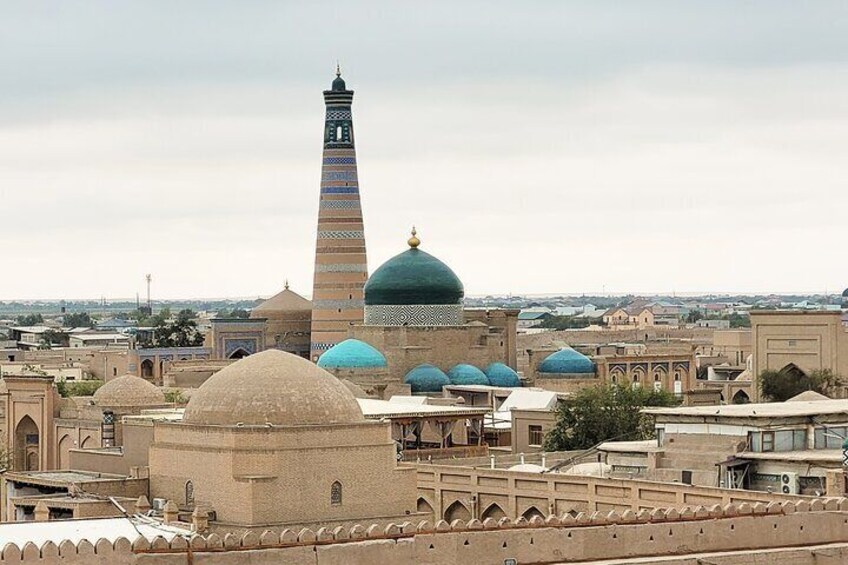Book your entire trip in one place, with free access to Mates Rates





Uzbekistan in 7 days Tashkent, Samarkand, Bukhara and Khiva
Features
- Free cancellation available
- 6d
- Mobile voucher
- Instant confirmation
- Selective hotel pickup
- Multiple languages
Overview
Uzbekistan is not only the heart of Central Asia but also a true reflection of culture, beauty, historical heritage, and national values at their finest. The rich history of our nation has been carefully preserved in Samarkand, Bukhara, Khiva, Tashkent, and other cities. We offer you an authentic journey through time, introducing you to our history, traditions, and local charm with guided tours to the most significant historical and cultural sites.
Our tour package includes accommodation in 3-4* hotels, breakfast, train tickets, transfers, transport services, excursions, and entrance tickets to the historical monuments. However, what truly sets us apart is our flexibility—we customise tours based on travellers' preferences, ensuring a personalised experience tailored to your plans and requirements.
We prioritise the desires of our guests, providing high-quality, comfortable, and authentic travel experiences. Visit Uzbekistan and explore its wonders with Assalam Travel!
Activity location
- Tashkent
- Tashkent, Uzbekistan
Meeting/Redemption Point
- Tashkent
- Tashkent, Uzbekistan
Check availability
Uzbekistan in 7 days Tashkent, Samarkand, Bukhara and Khiva in Multilingual
- 6d
- Opening hours: Wed 8:00 am-6:00 pm
- English
Pickup included
What's included, what's not
- Air Ticket from Urgench (The nearest airport to Khiva) to Tashkent
- Dinner
- All Fees and Taxes
Know before you book
- Wheelchair accessible
- Infants and small children can ride in a pram or stroller
- Public transport options are available nearby
- Specialised infant seats are available
- Transport options are wheelchair accessible
- All areas and surfaces are wheelchair accessible
- Suitable for all physical fitness levels
Activity itinerary
Day 1: ARRIVAL IN TASHKENT/CHECK-IN AT THE HOTEL
- 1 stop
- Meals: breakfast
- Accommodation: Travellers stay in comfortable 3-4 star hotels with Wi-Fi, breakfast, and great locations near historical sites.
Tashkent
- 1d
Day 2: EXCURSION IN TASHKENT
- 9 stops
- Meals: breakfast
- Accommodation: Travellers stay in comfortable 3-4 star hotels with Wi-Fi, breakfast, and great locations near historical sites.
Ensemble Hazrati Imam
- 1h 30m
- Admission ticket included
Juma Mosque
- 45m
- Admission ticket included
Abdul-kasim Sheikh Madrasah
- 45m
- Admission ticket included
Chorsu Bazaar
- 1h
- Admission ticket included
Amir Temur Square
- 30m
- Admission ticket included
Independence Square (Mustakillik Square)
- 40m
- Admission ticket included
Tashkent City Park
- 45m
- Admission ticket included
Uzbekistan State Museum of Applied Art
- 1h
- Admission ticket included
Amir Timur Museum
- 50m
- Admission ticket included
Day 3: TRIP TO SAMARKAND, THE CAPITAL OF TIMUR
- 6 stops
- Meals: breakfast
- Accommodation: Travellers stay in comfortable 3-4 star hotels with Wi-Fi, breakfast, and great locations near historical sites.
Gur Emir Mausoleum
- 40m
- Admission ticket included
Registan
- 1h
- Admission ticket included
Shah-i-Zinda
- 50m
- Admission ticket included
Ulugh Beg Observatory
- 40m
- Admission ticket included
Bibi Khanym Mosque
- 45m
- Admission ticket included
Siab Bazaar
- 45m
- Admission ticket included
Day 4: TRIP TO BUKHARA
- 7 stops
- Meals: breakfast
- Accommodation: Travellers stay in comfortable 3-4 star hotels with Wi-Fi, breakfast, and great locations near historical sites.
Lyab-i-Hauz
- 40m
- Admission ticket included
Chor-Minor
- 30m
- Admission ticket included
Trading Domes
- 40m
- Admission ticket included
Great Minaret of the Kalon
- 50m
- Admission ticket included
Ulugbek Madrasah
- 50m
- Admission ticket included
Ark of Bukhara
- 1h
- Admission ticket included
Samanid Mausoleum
- 30m
- Admission ticket included
Day 5: BUKHARA - KHIVA
- 1 stop
- Meals: breakfast
- Accommodation: Travellers stay in comfortable 3-4 star hotels with Wi-Fi, breakfast, and great locations near historical sites.
Amu Darya
- 6h
Day 6: KHIVA
- 8 stops
- Meals: breakfast, snacks
- Accommodation: Travellers stay in comfortable 3-4 star hotels with Wi-Fi, breakfast, and great locations near historical sites.
Itchan Kala
- 2h
- Admission ticket included
Mohammed Amin Madrassah
- 30m
- Admission ticket included
Kalta Minor Minaret
- 20m
- Admission ticket included
Pahlavan Mahmoud Mausoleum
- 30m
- Admission ticket included
Islam Khodja Complex
- 40m
- Admission ticket included
Friday Mosque (Juma Mosque)
- 45m
- Admission ticket included
Stone Palace (Tash Khauli)
- 45m
- Admission ticket included
Allakuli Khan Tim Market
- 30m
- Admission ticket included
Location
Activity location
- Tashkent
- Tashkent, Uzbekistan
Meeting/Redemption Point
- Tashkent
- Tashkent, Uzbekistan